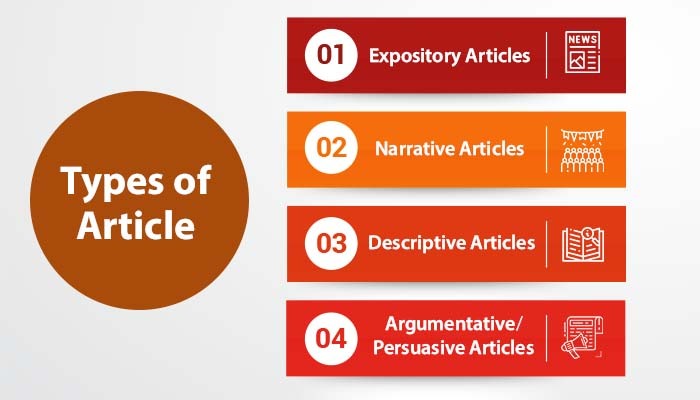Recognizing the Significance of Articles in Communication
The function of short articles in interaction usually goes undetected, yet their relevance can not be overstated. Articles, whether precise or indefinite, function as important signs that shape our understanding of uniqueness and generality in language. Misapplication of these relatively simple elements can bring about obscurity, weakening the performance of both spoken and created exchanges. As we discover the nuances of posts, it comes to be apparent that their proficiency is essential for specific communication. What effects does this have for expert discourse and everyday interactions?
Meaning of Articles
Articles are basic elements of language that offer to make clear and define nouns in interaction. They function as determiners, offering important details concerning the nouns they come before. In English, articles are split right into two primary classifications: precise and uncertain. The precise post "the" is used to describe details nouns that are known to the listener or reader, whereas indefinite posts "a" and "an" describe non-specific nouns.
Using posts is important in establishing the context of a declaration. For instance, claiming "the book" indicates a certain book that both the audio speaker and listener understand, while "a publication" could describe any kind of book, hence broadening the range of the conversation. This difference boosts clarity and permits for more accurate interaction.

Kinds Of Articles
In the world of language, articles are categorized into two key kinds: definite and indefinite. The certain write-up, "the," is made use of to refer to a certain noun that is recognized to both the audio speaker and the audience.
On the other hand, uncertain articles, "a" and "an," are employed to refer to non-specific nouns. They present a noun that is not previously understood to the audience.

Function in Clearness
A clear understanding of posts dramatically enhances communication by giving vital context relating to the specificity of nouns. Articles, categorized as precise or uncertain, serve to make clear whether we are referring to a specific entity or a general principle. For circumstances, using "the cat" implies a specific pet cat currently understood to the audience, while "a pet cat" introduces an unspecified one. This distinction is essential in effective interaction, as it overviews the audience's understanding and establishes assumptions.
Moreover, using short articles help in reducing obscurity. In sentences where multiple nouns exist, the visibility or absence of posts can alter the definition. For instance, "I saw a dog and a cat" suggests encountering among each pet, whereas "I saw the canine and the pet cat" indicates experience with the certain pets entailed.
Moreover, articles add to the coherence and flow of discussion. They signify transitions between general and particular points, therefore boosting the audience's capability to follow the debate or narrative. In recap, the duty of short articles in establishing clearness is indispensable, enabling accurate interaction and lessening misunderstandings in both spoken and composed language.
Effect On Communication
When articles are employed effectively, they supply context and information, permitting the target market to grasp the he said nuances of the topic. For instance, comparing "a pet" and "the dog" can considerably modify the interpretation of a sentence, resulting in different conclusions or actions. This precision is vital in specialist settings where miscommunication can bring about misconceptions or errors.
Additionally, the impact of write-ups expands beyond simple syntax; it affects the tone and procedure of interaction. Appropriate post usage can enhance the professionalism and trust of composed documents, promoting credibility and clarity in company interactions. In summary, articles play a crucial duty in fine-tuning the interaction procedure, ensuring that messages are not only clear yet also properly customized to their intended audience.
Usual Misconceptions
Misunderstandings bordering using short articles are common, particularly amongst non-native speakers and those not familiar with nuanced English grammar. One usual mistaken belief is the interchangeable usage of "a" and "an." While both are indefinite short articles, "a" is used prior to consonant sounds and "an" prior to vowel noises, which can cause mistakes when pronunciation is neglected.
Another frequent misunderstanding involves the guaranteed write-up "the." Lots of learners think its use is always essential; however, "the" is only proper when describing specific entities recognized to the audience. For example, saying "the water" suggests a particular body of water, while "water" describes the substance generally.
Furthermore, the noninclusion of posts can transform definition. For circumstances, the expression "I like songs" recommends a general recognition, while "I enjoy the music" suggests a particular set of songs.
Finally, confusion may develop from the lack of posts in various other languages, leading to overuse or underuse in English. Recognizing these nuances is crucial for efficient communication, as posts play an essential duty in conveying specificity and clarity.
Final Thought
In recap, news the relevance of posts in communication is paramount for making sure clearness and precision. Precise and uncertain posts serve unique objectives, permitting the spec and generalization of nouns. Their correct use not just boosts understanding yet likewise avoids potential misinterpretations - sssdarticles. Recognizing the role of articles in reliable interaction underscores their significance in both talked and written language, contributing to general professionalism and effectiveness in communicating details. Proper mastery of articles inevitably improves the communicative experience.